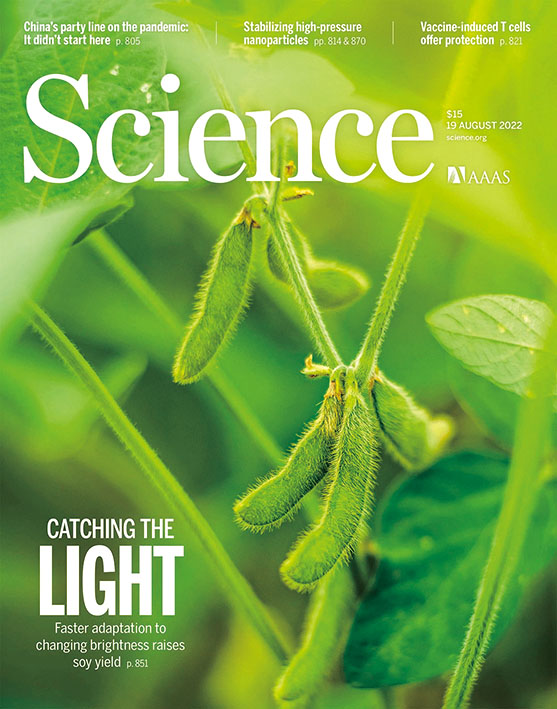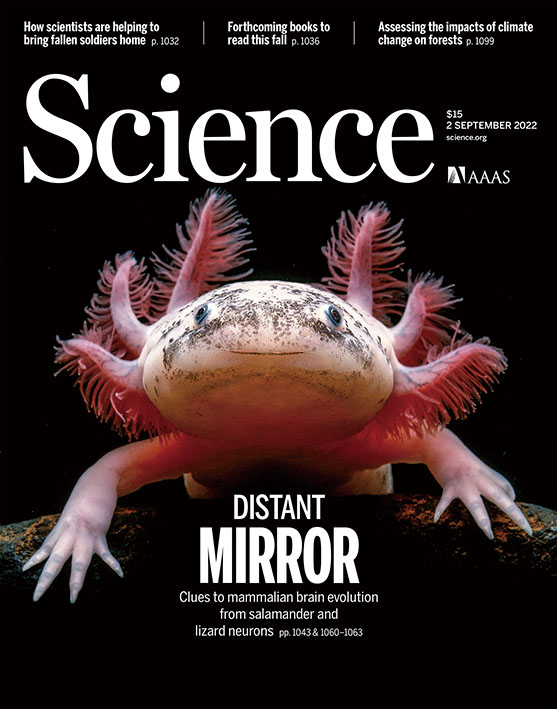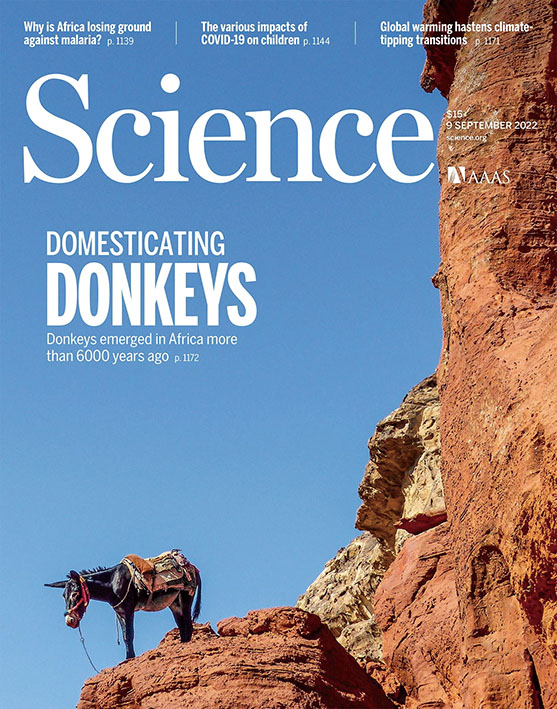[点击科学]2022年10月点击科学
2022-10/总第319期

2022-08-19
封面图展示的是豆荚生长的照片。在充足的阳光下,叶片会以热量的方式消散多余的能量保护自己;在背阴处,这种耗散过程会持续数分钟,降低光合作用。对于粮食作物来说,多基因操作首次加速了这种背阴耗散过程,提高了光合作用,并将田间大豆产量提高了30%。
Photograph of developing soybean pods. Leaves protect themselves in full sunlight by dissipating excess energy as heat. On shading, this dissipative process continues for many minutes, lowering photosynthesis. For the first time in a food crop, multigenic manipulation has sped relaxation of this dissipative process on shading, raising photosynthesis and increasing field soybean yield by up to 30%.

2022-08-26
封面上这幅画的灵感来自于青铜时代的艺术,描绘了不同文化背景的人们在西亚和东南欧之间传播他们的基因。图中从左到右分别是迈锡尼人、米诺斯人、赫梯人、亚美尼亚人和乌拉尔图人。研究人员分析了共计1 317个跨越1万年的古代基因组,以揭示这些区域之间的多种联系,而这些联系在现代DNA中是不可见的。
This image inspired by Bronze Age art depicts people of diverse cultures spreading their genes between West Asia and Southeast Europe. From left to right: Mycenaean, Minoan, Hittite, Armenian, and Urartian. A total of 1 317 ancient genomes spanning 10,000 years were analyzed to reveal the manifold connections between these regions that are invisible in modern DNA.

2022-09-02
封面图展示的是以墨西哥钝口螈为代表的蝾螈,它们具有再生大脑的能力。在本期中,4篇论文通过单细胞转录组研究了两栖动物和爬行动物的大脑神经元。这些研究分析有助于深入了解为什么蝾螈的大脑保留了哺乳动物大脑失去的再生能力,以及在进化过程中大脑结构的创新是如何产生的。
The axolotl, represented here by the Mexican axolotl Ambystoma mexicanum, has the ability to regenerate its brain. In this issue, a group of four papers profiles amphibian and reptile brain neurons with single-cell transcriptomics. Analyses lend insight into why the axolotl brain retains regenerative capability that the mammalian brain has lost as well as how structural brain innovations arose during evolution.

2022-09-09
封面图展示的是1头来自约旦佩特拉的驴子,它驮着货物在崎岖不平的路途上行进,数千年来,其他数以百万计的驴子也是这样做的。通过基因分析,科学家追踪到了它们起源于7 000年前非洲的单一品种,经过2 500年后在欧亚大陆快速扩张。同时古老的基因组还揭示了跨地中海地区之间的交换、巨大的罗马野兽,以及前所未知的黎凡特地区物种多样性。
A donkey from Petra, Jordan, carries goods through the rugged landscape, as millions of others have done for millennia. Genetic analysis tracks their journey from a single domestic origin in Africa as early as 7 000 years ago to rapid expansions through Eurasia 2 500 years later. Ancient genomes also reveal trans-Mediterranean exchange, giant Roman beasts, and previously unknown diversity in the Levant.






